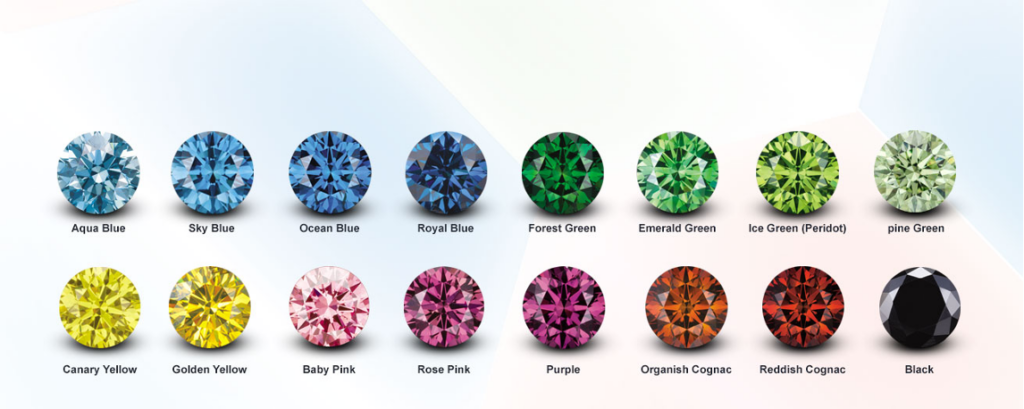
The Color of Diamonds: What It Means for Their Value
Diamonds have long been treasured for their beauty, rarity, and symbolic significance. While many people are familiar with the classic clear, or “white,” diamond, these precious stones actually come in a stunning array of colors. The color of a diamond can significantly affect its value, making it an essential factor for both buyers and collectors to consider. Understanding the nuances of diamond color and its impact on value can help you make informed decisions when purchasing or evaluating these gemstones.
The Diamond Color Scale
The most common diamonds are graded on a color scale established by the Gemological Institute of America (GIA), ranging from D (colorless) to Z (light yellow or brown). Here’s a brief overview of this scale:
– D-F (Colorless): These diamonds are extremely rare and highly valued. They exhibit no discernible color to the naked eye and allow the most light to pass through, resulting in exceptional brilliance.
– G-J (Near Colorless): Diamonds in this range have slight traces of color, but they are generally considered high-quality stones. They offer a good balance of appearance and value.
– K-M (Faint Color): These diamonds show a faint yellow or brown tint. While less sought after than the higher grades, they can still be beautiful, especially in settings that complement their warm tones.
– N-R (Very Light Color): Diamonds in this category have noticeable color that can affect their brightness and overall appearance. They are less expensive and often chosen for more budget-friendly jewelry.
– S-Z (Light Color): These diamonds have a more pronounced yellow or brown hue and are the least valuable on the traditional color scale.
Fancy Colored Diamonds
Beyond the traditional white diamonds, there are also “fancy colored diamonds,” which come in a variety of hues, including yellow, blue, pink, green, and even red. These diamonds are graded differently, and their value is often determined by the intensity and purity of their color. Fancy colored diamonds are extremely rare and can command astronomical prices. Here are some notable examples:
Yellow Diamonds: Often referred to as “canary diamonds,” these are the most common fancy colored diamonds. Their value increases with the intensity of the yellow hue.
Blue Diamonds: Among the rarest and most valuable, blue diamonds owe their color to the presence of boron. The Hope Diamond is a famous example.
Pink Diamonds: Highly prized for their romantic hue, pink diamonds can be incredibly valuable, especially those with intense color saturation. The Argyle Mine in Australia was a primary source of pink diamonds until its closure in 2020.
Green Diamonds: These diamonds are rare and typically exhibit a soft, pastel green color. Natural green diamonds get their color from exposure to radiation.
Red Diamonds: The rarest of all, red diamonds are almost impossible to find. Their unique color makes them exceptionally valuable.
Factors Influencing Value
Several factors influence the value of colored diamonds:
Color Intensity: The more vivid and intense the color, the higher the value. This is especially true for fancy colored diamonds.
Clarity: While color is paramount, clarity still plays a role. Fewer inclusions can enhance a diamond’s brilliance and overall appeal.
Cut: A well-cut diamond will maximize light reflection and color display, enhancing its beauty and value.
Carat Weight: Larger diamonds are rarer and thus more valuable, but the impact of carat weight on value is significantly influenced by color.
The color of a diamond is a crucial determinant of its value, influencing both its aesthetic appeal and market price. Whether you’re drawn to the classic allure of a colorless diamond or the vibrant hues of a fancy colored gem, understanding the complexities of diamond color can guide you in making a wise investment and selecting a stone that truly resonates with your personal taste and style.

